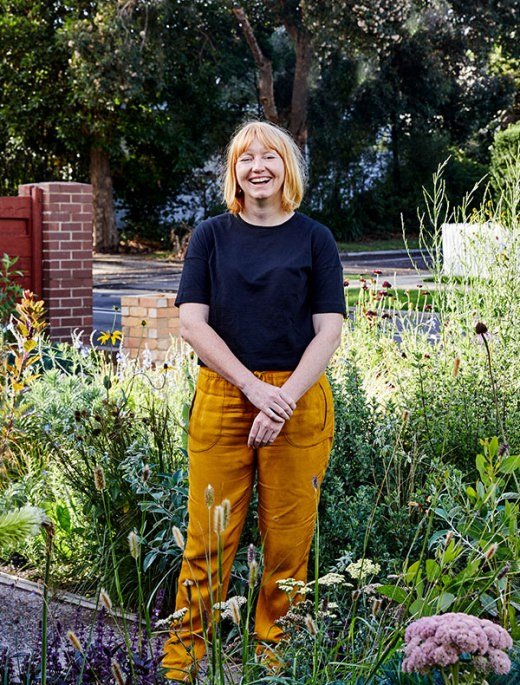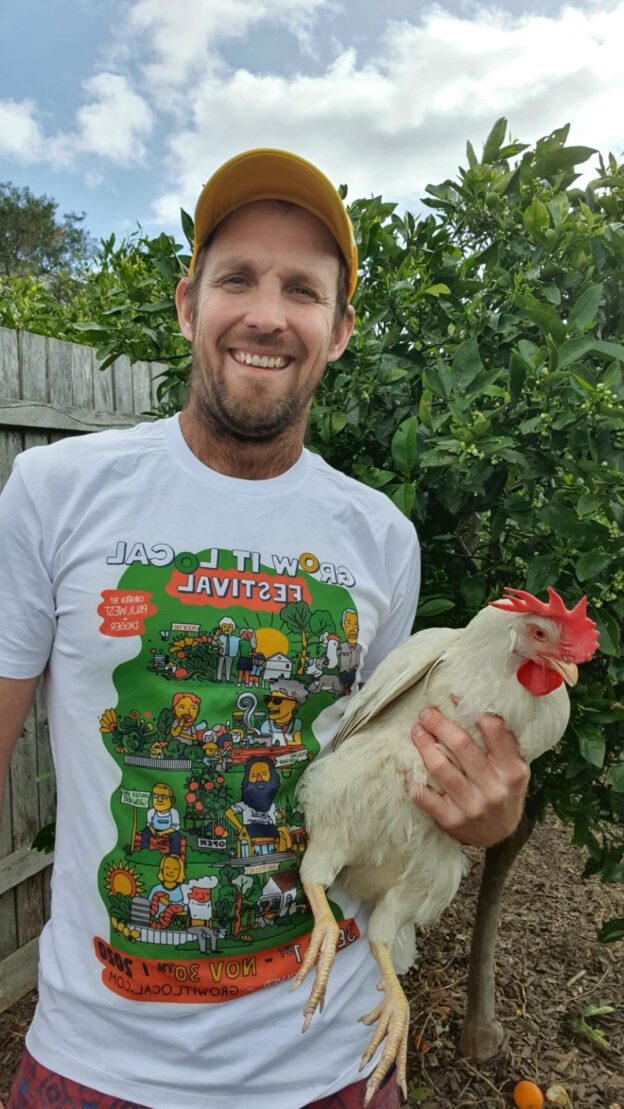Learn to grow microgreens at home, join Grow It Local +
Learn > How To
Q & A with Renee Cawthorne

What is your name and where are you from?
My name is Renee Cawthorne and I am a Wiradjuri woman, my family come from Albury in NSW.
Tell us about your role at the Royal Botanic Gardens Sydney?
I am quite new to the RBG, I started my new roe as Manager of Aboriginal Education and Engagement in September this year. My role is to manage the Education and public cultural programs, as well as building relationships and partnerships with First Nations communities and schools across NSW. I also work on various programs across the RBG including the Caylyx exhibition working group, development of the Mt Annan Plant bank interpretations and art installations amongst others.
Do you have any favourite native edibles and if so why?
Warrigal Greens, which is also knows as New Zealand spinach. It’s scientific latin name is tetragonia tetragonioides,its easy to grow, makes for good ground coverage. Warrigal Greens – also known as Warrigal Spinach, New Zealand Spinach or even Botany Bay greens – were one of the first native Australian vegetables to become popular with European settlers. Looking for ways to fight scurvy, Captain Cook encouraged his men to eat them, and many convicts owed their lives to the spinach-like plant. The plant was taken back to England by the botanist Sir Joseph Banks and became popular there for a time. Warrigal Greens can be eaten just like English spinach. Some caution should be taken with Warrigal Greens, as the leaves do contain toxic oxilates, which can be harmful if consumed in large quantities. To remove the oxates it’s a good idea to blanch the leaves for 3 minutes or so, then rinse the leaves in cold water before using them in salads or for cooking. Native Finger limes are like caviar, the are little burst of lime flavour, and are a great source of vitamin C. They are also great on oysters.
What would you say to someone who is thinking about growing native edibles at home?
Native plants are good for the natural environment, offer more benefits in that they are suited to the soil, climate and humidity and provide natural habitats for native birds and animals. If you select the right types of plants, so species that are endemic to your area, your garden is more likely to thrive. Plants like lomandra longifolia grow in high saline soils and dry soils and are good for areas with little rainfall.

Any tips for folks interested in growing natives edible in small spaces?
Finger limes dianella, and warrigal greens are great plants for small places. It is a good idea to protect trees from the wind as the fruit can be damaged by the plant’s thorns. Finger limes thrive in shaded areas as well as in full sunlight. They are able to withstand light frost and you should plant them in a partly shaded north-facing site. Finger limes, along with other citrus, make good hedges and also grow well against fences and walls. Dianella is quite a small plant it has beautiful long green, leaves and produces an edible purple/blue berry that you can eat. Warrigal Greens are also good for area coverage and grows almost anywhere.
Any favourite recipes you love to cook with native edibles?
I love cooking a quiche using the warrigal greens, lily pilly cordial is definitely a favourite, my kids love it and can’t drink enough of it, I love roasted macadamia nuts, many people don’t know that these are native to Australia, they are high in carbohydrates and contain more oil than any other nut.
WARRIGAL GREENS PESTO
1 cloves garlic
1/4 cup roasted and chopped macadamia nuts
3 cups Warrigal Greens, blanched and chopped.
1 tspn salt
½ tspn Mountin black pepper
Generous cup of macadamia oil
1/4 cup grated parmesan cheese
Method: Combine all ingredients in a food processor and blend until smooth.
What are some other traditional uses of native edibles?
Paperbark is used for cooking, some mob used to wet the paperbark and put some lemon myrtle and salt bush leaves for flavour and would wrap the fish in the paperbark. The wetting of the paperbark also helped in timing how long the fish took to cook and when you peel open the paperbark it descales the fish the scales stick to the paperbark as you remove it.
Seeds from lomandra longifolia also known as spiny headed matrush, are ground down into a powder, mixed with water to make a starchy paste, these are cooked over the coals to make johnny cakes, like damper but sweeter.
Top 3 favourite songs for the garden?
From Little things big things grow by Paul Kelly ,
Cadigal Land, Dan Sultan and Joel Davidson, Kaleena Briggs, and Bunna Lawrie.
How can people learn more or attend one of your tours at the Royal Botanic Gardens Sydney?
Information about our Tours and programs can be found on the RBG website, on the What’s On page.
We have a lot of programs for NAIDOC week happening here next week. We regularly run our Aboriginal Heritage Tours which talk about the rich cultural history of the RBG site, whilst an Aboriginal guide takes you through the cadi garden and then you can try some bushtucker. We also plan on running sunset tours over summer. Drew Roberts from Shared Knowledge has just started running an Aboriginal Bushtucker Experience in Vic Lodge overlooking the opera house, harbour bridge and Sydney harbour. A guide from shared knowledge takes you on a short tour through the gardens where you learn about native plants and their use in culinary cuisine, then you can enjoy a high morning tea, Lunch and afternoon tea or dinner. We also have an Aboriginal adornment workshop for our xmas programs, where you can learn about the way the first nations peoples would adorn themselves and make your own unique piece of jewellery using natural plant seeds and materials.




